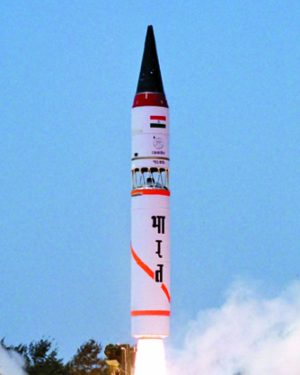With both countries professing nuclear policies of No First Use, India and China don’t talk to each other much about their nuclear weapons forces. China, indeed, still sees India’s possession of nuclear weapons as a state outside of the Treaty on the Nonproliferation of Nuclear Weapons as unacceptable and New Delhi, meanwhile, sees Beijing’s arsenal as a continued source of concern for its self-professed pursuit of a credible minimum deterrent. Neither side takes the other’s assurances on No First Use at face value — and thus nuclear competition persists in southern Asia, with the dyad between China and India existing alongside the much more discussed India-Pakistan nuclear relationship.
Despite the importance of the nuclear competition between these two countries, with their populations amounting to more than 2.8 billion people, there are few good resources on how and where the two sides have postured their nuclear forces. A new interactive presentation published this week by the Belfer Center for Science and International Affairs at the Harvard Kennedy School provides an excellent top-level view of the nuclear relationship between the two countries and how the sides manage their postures. The authors, Frank O’Donnell and Alexander K. Bollfrass, have meticulously mapped out the known strike ranges of delivery systems available to both sides — based on publicly available information — and also provided maps detailing where specific units are based.
Their analysis also considers the conventional military balance between the two sides. As intermittent crises between the two countries, such as the 2017 Doklam standoff, often remind, any kinetic conflict between India and China will began at a low level. The conventional military balance is what Indian planners, in particular, have given much thought to in recent years along the two countries’ disputed Himalayan border. India remains one of just two countries with whom China has an unsettled land border, the other being Bhutan, the primary territorial claimant in the Doklam crisis.
Based on their findings, the authors offer important recommendations for policymakers in New Delhi in particular, writing that “India has key under-appreciated conventional advantages that reduce its vulnerability to Chinese threats and attacks.” They add that “India appears to have cause for greater confidence in its military position against China than is typically acknowledged in Indian debates, providing the country an opportunity for leadership in international efforts toward nuclear transparency and restraint.” They suggest that instead of pursuing additional investments in nuclear weapons capabilities to deter China, India would be better suited by focusing on the survivability of its existing force and by filling “the gap in global arms control leadership with an initiative on restraint and transparency.”

































